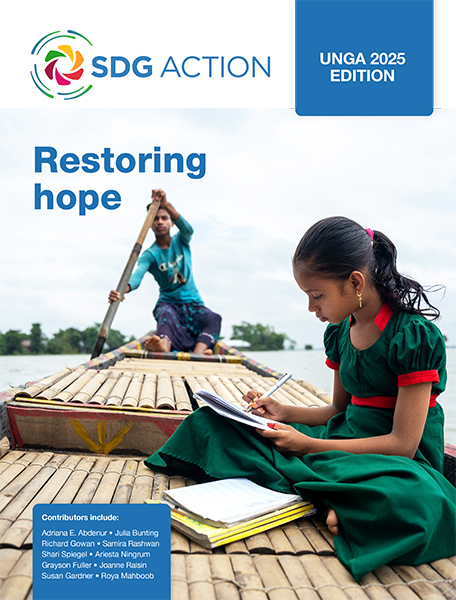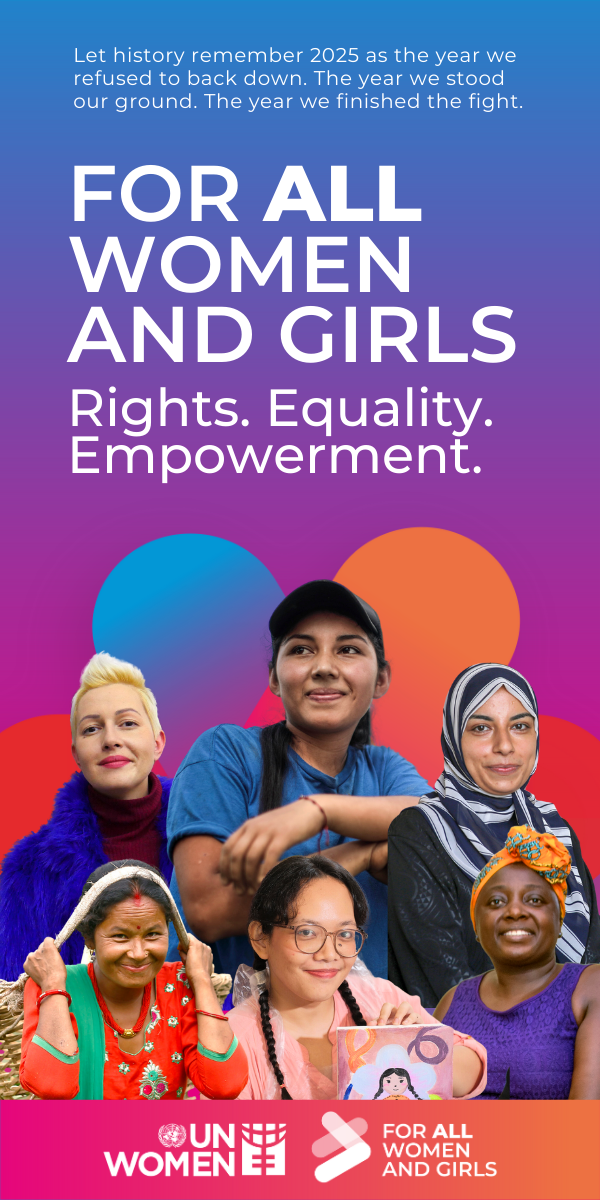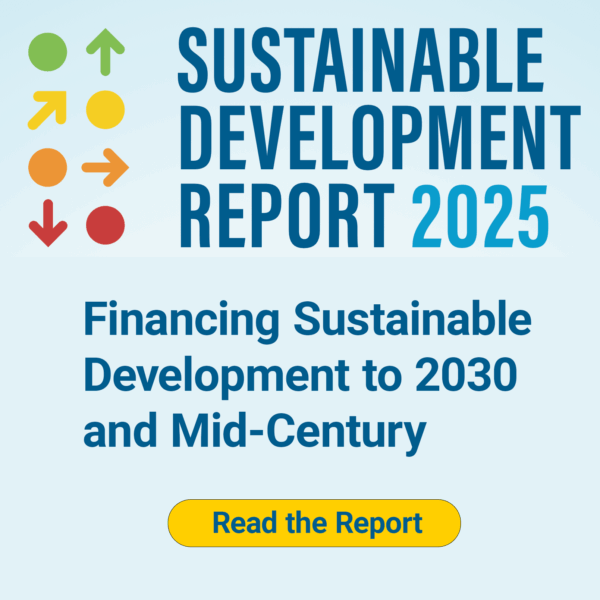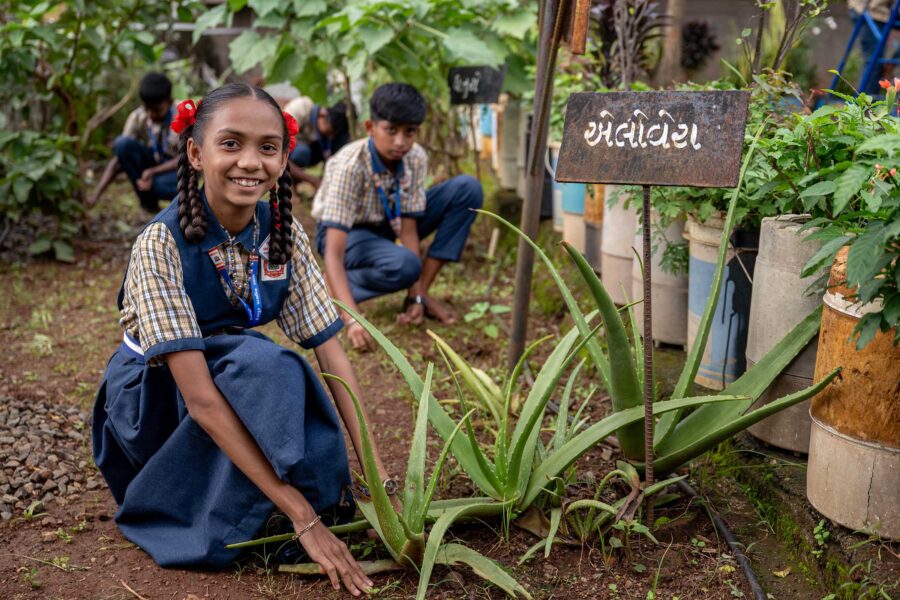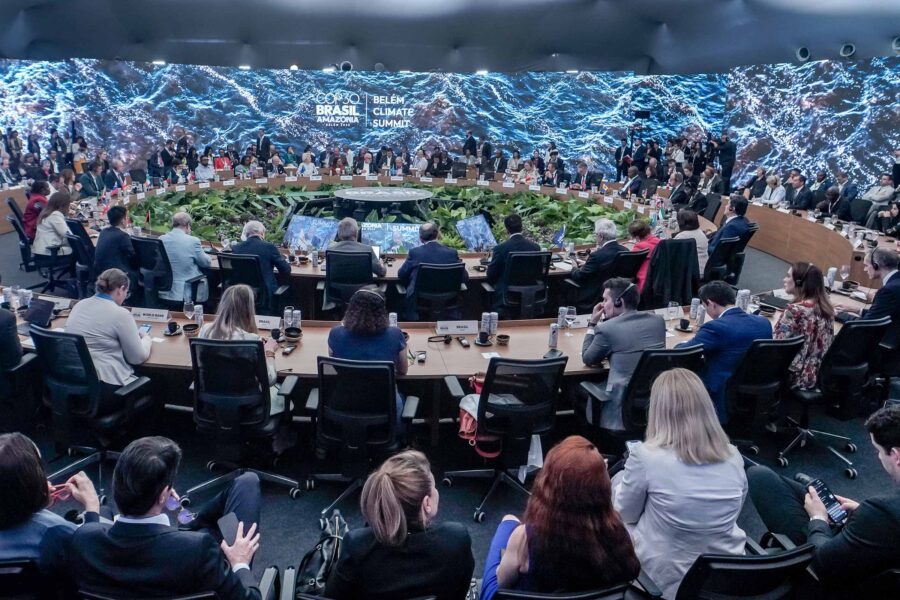Why demography drives global development: a hidden force behind the SDGs
Demographic change is reshaping our world in profound and unequal ways. By planning for population shifts rather than reacting to them, we can seize opportunities to drive progress in areas like education, health, sustainability, and reproductive rights – and build a fairer future for all
Economic development — Global

The world is at a turning point. As we get closer to 2030, many of the global goals we set ourselves to build a better world – the Sustainable Development Goals (SDGs) – are not on track. Global crises like COVID-19, conflicts, and climate change, coupled with insufficient financing, are hindering progress. Challenges in governance, rising inequalities, and a lack of data and accountability are further derailing efforts, making the Agenda 2030 targets increasingly unattainable.
But behind the scenes, an often underrated force quietly shapes the success or failure of our global development ambitions: demographic change. From the bustling megacities of Asia to the depopulating rural regions of Europe and the burgeoning youthful populations of Africa, demographic shifts are not just the concern of social scientists or a statistical curiosity. They are fundamental trends reshaping our capacity to build a sustainable and equitable world for all.
A demographically diverse world
The global population, currently standing at 8.2 billion, is projected to reach 9.7 billion by 2050, peak at around 10.3 billion in the mid-2080s and decline to 10.2 billion by the end of the century. Yet, this global picture conceals stark differences. Over the next 30 years, 90% of global population growth will be concentrated in just 26 countries – mostly in sub-Saharan Africa and South Asia – while 76 countries and areas will see their populations decline due to negative natural population growth (the balance between births and deaths), negative net migration, or both. Fertility decline, paired with rising life expectancy, is driving rapid population aging, which is most advanced in high-income countries, but is occurring at the fastest pace in middle-income countries.
Meanwhile, an unprecedented urban shift continues: by 2050, 70% of humanity will live in cities. Although international migrants make up less than 4% of the global population, forced migration and displacement are increasing and acute in some countries and regions due to conflict, disasters, political instability, environmental degradation, and/or economic crises. These trends are not isolated. Their impacts are deeply interwoven with every facet of the 2030 Agenda, and present both pressing challenges and transformative opportunities.
Too fast for some, too slow for others
In the poorest countries, economic growth and development often struggle to keep pace with population growth, perpetuating cycles of extreme poverty and hunger. Projections warn that by 2030 (if current trends continue), 590 million people could remain in extreme poverty. It is estimated that 600 million people will suffer chronic undernourishment five years from now – representing a global failure to progress from 2019 levels.
Over two billion people lack access to safe drinking water, and 3.5 billion lack access to sanitation. Global waste is projected to increase by 73% by 2050, driven largely by rapid urbanization and rising per capita consumption in middle-income countries. At current rates, child marriage will not be eradicated until 2092, limiting the life chances of millions of girls every year. Today, more than 230 million girls and women have undergone female genital mutilation – a 30 million increase over the past eight years alone. The global maternal mortality ratio remains nearly three times higher than the SDG target (at 197 deaths per 100,000 live births in 2023 versus the 2030 SDG target of 70). About 70% of these deaths occur in sub-Saharan Africa – the region with the fastest growing population and increasing demands on already strained health systems.
While fewer countries now face the challenges of rapid population growth, a growing number are grappling with the implications of slow, stagnant, or negative population growth and rapid population aging. Fewer workers paying taxes and more people drawing pensions and requiring care in old age are resulting in strain on public finances and the sustainability of health and welfare systems. In countries lacking robust social protection, population aging often leads to rising poverty among older people – especially women, who face lifelong disparities and a disproportionate burden of informal caregiving. There are also concerns that aging workforces can also reduce productivity, curbing economic output and driving up public deficits.
Rather than anticipating and planning for demographic change – and adapting social systems, infrastructure, economies, and societies accordingly – many governments are pushing back these necessary structural reforms to the next generation of decision-makers. Indeed, rather than contending with long-term planning, some have resorted to short-term fiscal incentives, such as cash bonuses to encourage couples to have more children, in an attempt to reverse fertility declines and stimulate economic growth.
These measures have shown only limited and temporary success. Worse still, some policymakers have proposed or implemented restrictions of reproductive health and rights, hoping to shift fertility trends. Regressive actions against individual rights and choices undermine reproductive agency – as highlighted in UNFPA’s 2025 State of the World Population Report – while failing to achieve their demographic aims, with detrimental consequences for progress toward the SDGs.
Seizing demographic opportunities
Yet, demographic change also presents powerful opportunities for transformation. The 2030s will see the largest generation of young people in history – close to 1.4 billion people aged 15 to 24, almost 90% of whom will live in low and middle-income countries. Youthful populations, if empowered, can drive innovation, power economies, harness digital technologies, help build peace, and combat the climate crisis. Countries with a large share of their populations in the working age range can reap the benefits of a “demographic dividend” by investing in lifelong education, health across the life course, and decent jobs, boosting economic growth and development.
As lifespans expand and populations age, the active participation of older people in the labor market, along with their engagement in communities and families, can yield significant social and economic benefits. The International Monetary Fund (IMF) projects that healthy aging could add 0.4 percentage points to gross domestic product (GDP) growth, on average, between 2025 and 2050. Migration, when governed fairly and effectively, can also yield broad benefits, improving livelihoods for migrants, generating remittances for countries of origin, and easing labor shortages in host countries.
And the interlinked issues of gender and reproductive rights cannot be overemphasized in this conversation. At all levels, sexual and reproductive health and rights and gender equality are critical enablers of sustainable development. Achieving gender parity in the workforce would unlock enormous economic potential in countries with aging populations, for example. Enabling all people to exercise their reproductive rights – including the agreed human right to decide freely and responsibly the number and spacing of their children – also enables them to invest scarce resources in their own human capital and that of future generations.
Adapting to the new realities
Demographic change is not a passive backdrop to global development – it is an active, dynamic force, interacting with other global megatrends like digital transformation and climate change. Global development success will require a more nuanced understanding of these dynamics and a proactive, integrated, forward-looking policy response guided by fundamental approaches that apply across all demographic contexts.
The solution to demographic challenges is not to manipulate population dynamics but to adapt institutions and systems to new demographic realities. That means investing in human capital across the life course, and building inclusive societies where young people, women, migrants, older people, and other marginalized groups can all participate fully in social and economic life.
It also means fostering intergenerational trust and solidarity, strengthening global cooperation, and embedding data and foresight into policymaking. Demographic change is inevitable – but is also predictable. With the right policies and a long-term vision, the world can navigate the demographic shifts of the 21st century and realize the promise of a sustainable and equitable future for current and future generations.
Featured in:
UNGA 2025 edition: Restoring hope
An effective multilateral response is needed for an ever increasing number of crises. At the same time, the UN – the heart of the multilateral system for 80 years – is under attack from nations trying to defund and disempower it. Radical reform is clearly needed. Whatever form that takes, it should be guided by and designed to support the SDGs.
This edition considers the impacts of inequality and conflict, and explores ways to build a fairer, safer future through education, technology, economic development and global partnerships.
Authors include Adriana E. Abdenur, Julia Bunting, Richard Gowan, Samira Rashwan, Shari Spiegel, Ariesta Ningrum, Grayson Fuller, Joanne Raisin, Susan Gardner and Roya Mahboob.
Publication date: 22 September 2025

